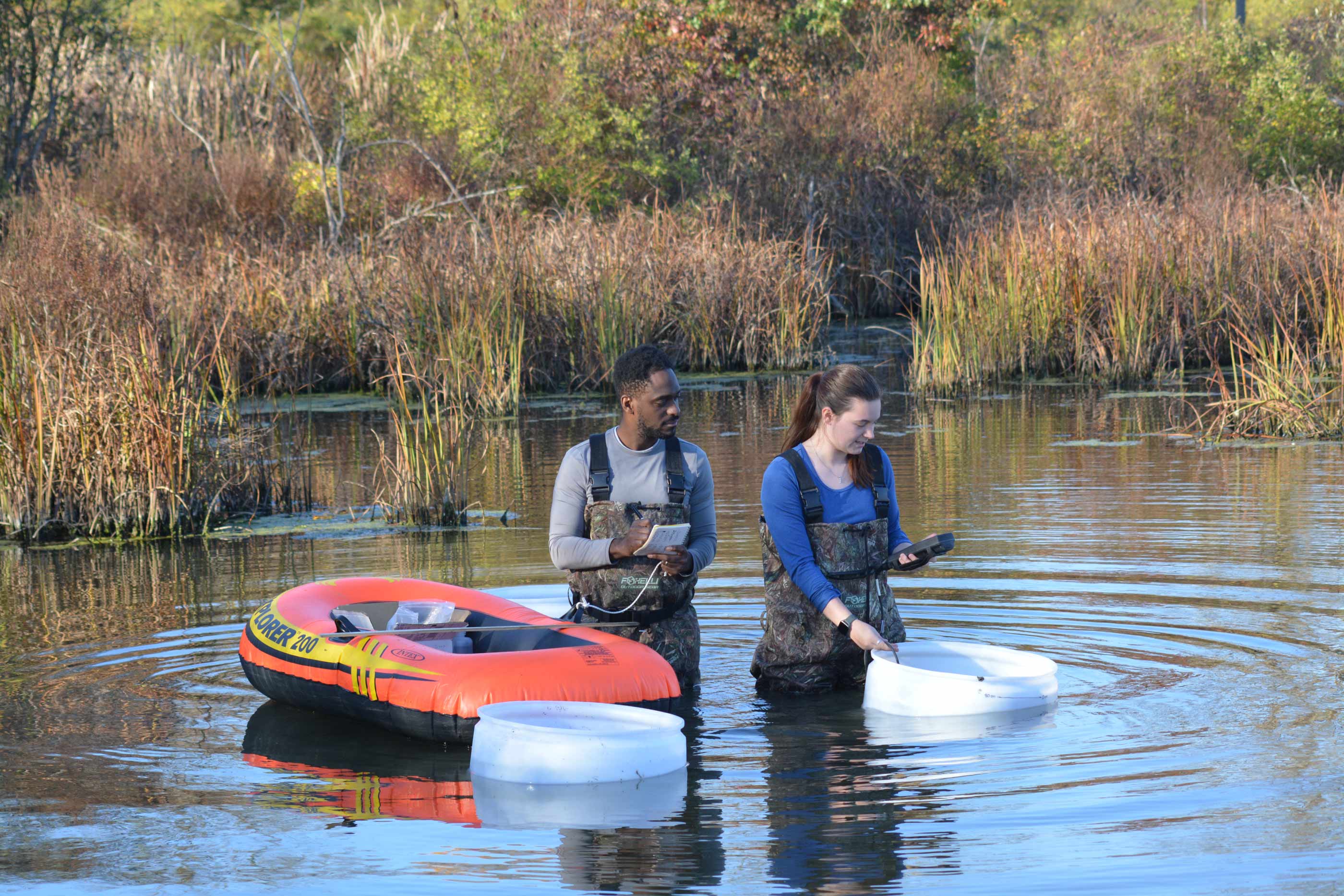Nutrient Processing in Beaver-Impounded Streams
Assistant Professor Deon Knights

Beavers have been repopulating the Northeast United States and altering the hydrological cycle of river networks in this region by creating impoundments, in otherwise channelized streams, that alter the flow of water, solutes, and particulates. Lakes and wetlands within a river network can sometimes provide ecological services by helping to filter and attenuate nutrients that are sourced from septic systems and lawn care activities in urban streams like the Casperkill. Left unabated, nutrients can stimulate the growth of harmful algal blooms, some of which release toxins that harm aquatic organisms and humans.
Beaver impoundments may remove excess nutrients (i.e. taken out of the water column and not transported downstream). As part of this research, we measure the rate beaver impoundments remove nutrients in surface water and ground. We monitor nutrient processing rates using eco chambers, microcosms, and groundwater monitoring points across different seasons.